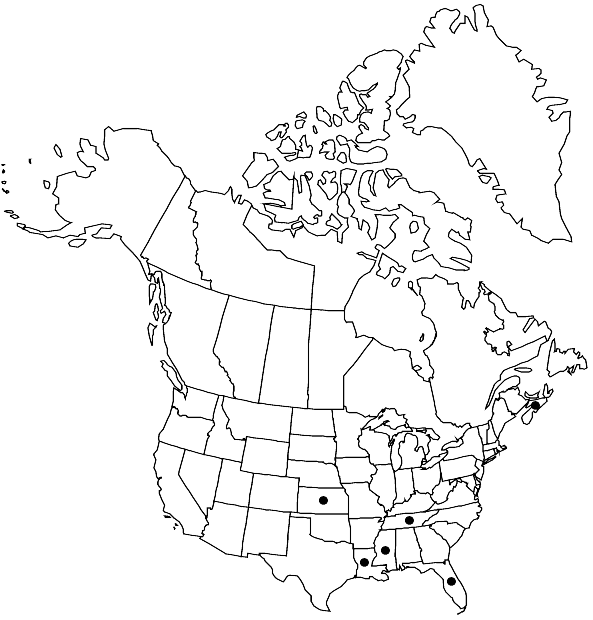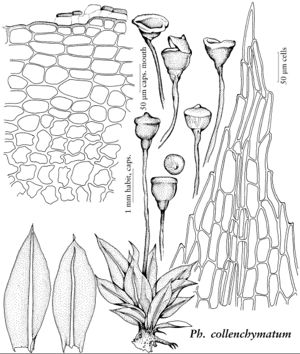Difference between revisions of "Physcomitrium collenchymatum"
Trans. Kansas Acad. Sci. 58: 330, plate 1. 1955,.
FNA>Volume Importer |
imported>Volume Importer |
||
| (3 intermediate revisions by 2 users not shown) | |||
| Line 34: | Line 34: | ||
-->{{#Taxon: | -->{{#Taxon: | ||
name=Physcomitrium collenchymatum | name=Physcomitrium collenchymatum | ||
| − | |||
|authority=Gier | |authority=Gier | ||
|rank=species | |rank=species | ||
| Line 49: | Line 48: | ||
|publication year= | |publication year= | ||
|special status= | |special status= | ||
| − | |source xml=https:// | + | |source xml=https://bitbucket.org/aafc-mbb/fna-data-curation/src/2e0870ddd59836b60bcf96646a41e87ea5a5943a/coarse_grained_fna_xml/V27/V27_266.xml |
|genus=Physcomitrium | |genus=Physcomitrium | ||
|species=Physcomitrium collenchymatum | |species=Physcomitrium collenchymatum | ||
Latest revision as of 22:25, 5 November 2020
Plants light green or yellowish green. Stems 2–4(–5) mm. Leaves obovate to ovate-lanceolate, concave, distal leaves 1.2–2 mm; margins toothed distally; costa percurrent to subpercurrent. Specialized asexual reproduction as tubers occasionally present. Seta 2–3 mm. Capsule exserted, 0.5–1.2 mm, ovoid to hemispheric when young, cupulate following dehiscence of operculum, and usually becoming shallow and wide-mouthed with age; neck short, indistinct; exothecial cells irregular rounded-hexagonal, often with curved walls, sometimes collenchymatous (apparently only on young capsules); suboral cells weakly differentiated, usually consisting of 2–6 rows of irregularly isodiametric cells. Spores 24–38 µm, spiculose or papillose.
Phenology: Capsules mature late fall–spring.
Habitat: Wet soil in disturbed places
Elevation: low to moderate elevations
Distribution

N.S., Fla., Kans., La., Miss., Tenn.
Discussion
The small size combined with the wide-mouthed and shallow mature capsules distinguish this taxon from other species of Physcomitrium. The collenchymatous exothecial cells that are associated with the name of this species are most common in maturing capsules and rarely present in mature capsules (R. R. Ireland 1982; H. A. Crum and L. E. Anderson 1981).
